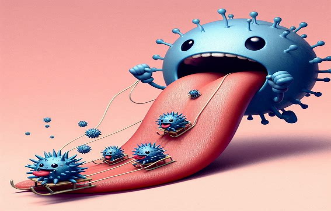Loss of taste, one of the most common and frustrating symptoms of COVID-19 infection, appears to be associated with persistent damage to taste buds caused by low amounts of the virus that can linger for months or even more than a year. Findings from the NIA study were published in NEJM Evidence.
COVID-related loss of smell and taste affects millions of people, can negatively alter overall quality of life and nutrition, and lead to depression. A recent study estimated that 60% of people infected with COVID in 2021 lost some ability to taste or smell, and a quarter of those patients, approximately 28 million Americans, didn’t fully recover and were left with a decreased sense of smell.
To understand why some people experience persistent loss of taste, a team of NIA scientists looked at 16 people who had recovered from COVID-19 and still lacked a sense of taste six weeks after a negative COVID nasal swab test. The team examined biopsy samples, discovering that low amounts of virus, undetectable by COVID polymerase chain reaction (PCR) tests, lingered in tongue and taste bud cells in some cases for as long as 1.5 years. They also found that taste bud basal cells — which produce new taste buds as old ones die off — affected by the virus produced buds that were smaller, misshapen, and had fewer taste receptor cells than healthy ones.
This work built on previous NIA research, which had shown that one of the known COVID-19 virus receptors is also present on taste bud receptor cells. In that earlier study, the researchers turned their focus to long-term COVID-related taste problems to see whether they were caused by persistent virus.
The good news from this more recent study is that most of the people affected by lingering COVID eventually recovered their sense of taste. The team’s future research goals include seeking a better understanding of the connections between COVID-related smell and taste loss and the body’s inflammatory and immune system reactions to the virus.
